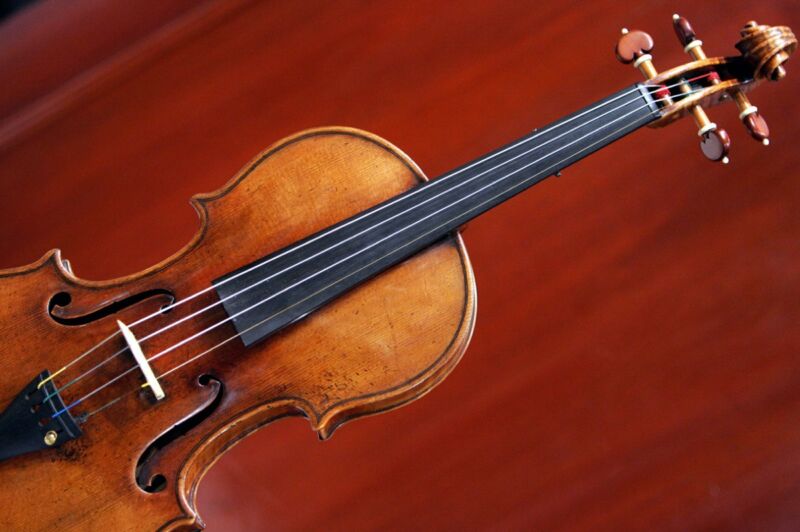
Enlarge / A 1729 Stradivari known as the “Solomon, Ex-Lambert” on display at Christie’s in New York in March 2007. (credit: Don Emmert/AFP/Getty Images)
Along with Andrea Amati and Andrea Guarneri, Antonio Stradivari dominated the so-called Golden Age of Violins (roughly 1660 to 1750), and the instruments they crafted remain the gold standard today in terms of acoustic quality. World-renowned cellist Yo-Yo Ma has long favored a Stradivarius instrument, as does violinist Joshua Bell. But scientists have been arguing for years about precisely why these instruments have such superior sound. A recent paper published in the journal Angewandte Chemie confirms a theory dating back to 2006: the secret lies in the chemicals used to soak the wood, most notably borax, zinc, copper, alum, and lime water.
I’ve written extensively about this topic in the past. The (perceived) unique sound can’t just be due to the instrument’s geometry, although Stradivari’s geometrical approach did give us the violin’s signature shape. One hypothesis is that Stradivari may have used Alpine spruce that grew during a period of uncommonly cold weather, which caused the annual growth rings to be closer together, making the wood abnormally dense. Another prevailing theory has to do with the varnish: namely, that Stradivari used an ingenious cocktail of honey, egg whites, and gum arabic from sub-Saharan trees—or perhaps salts or other chemicals.
Then again, the difference may be all in our heads. A player’s instrument preference is highly subjective, and there’s some evidence of so-called “psychoacoustics” at play: that is, we’ve become so awed by the name Stradivarius that it influences how we evaluate or respond to the sound of one of Stradivari’s instruments.
